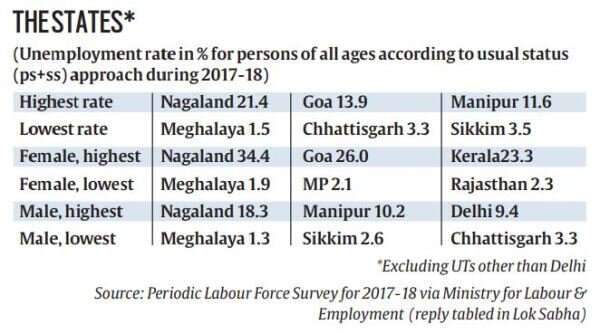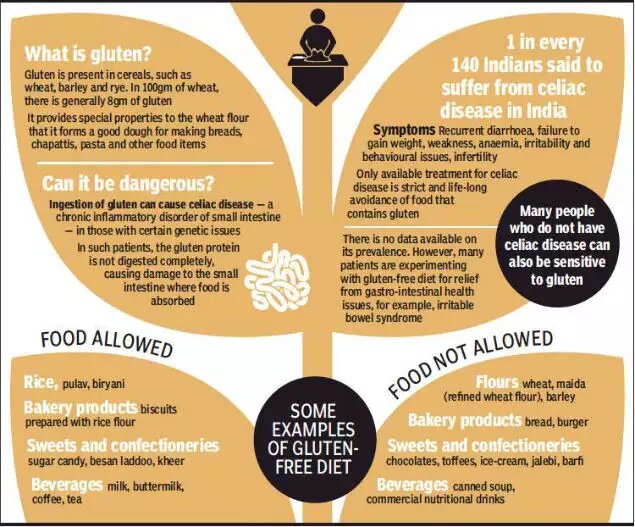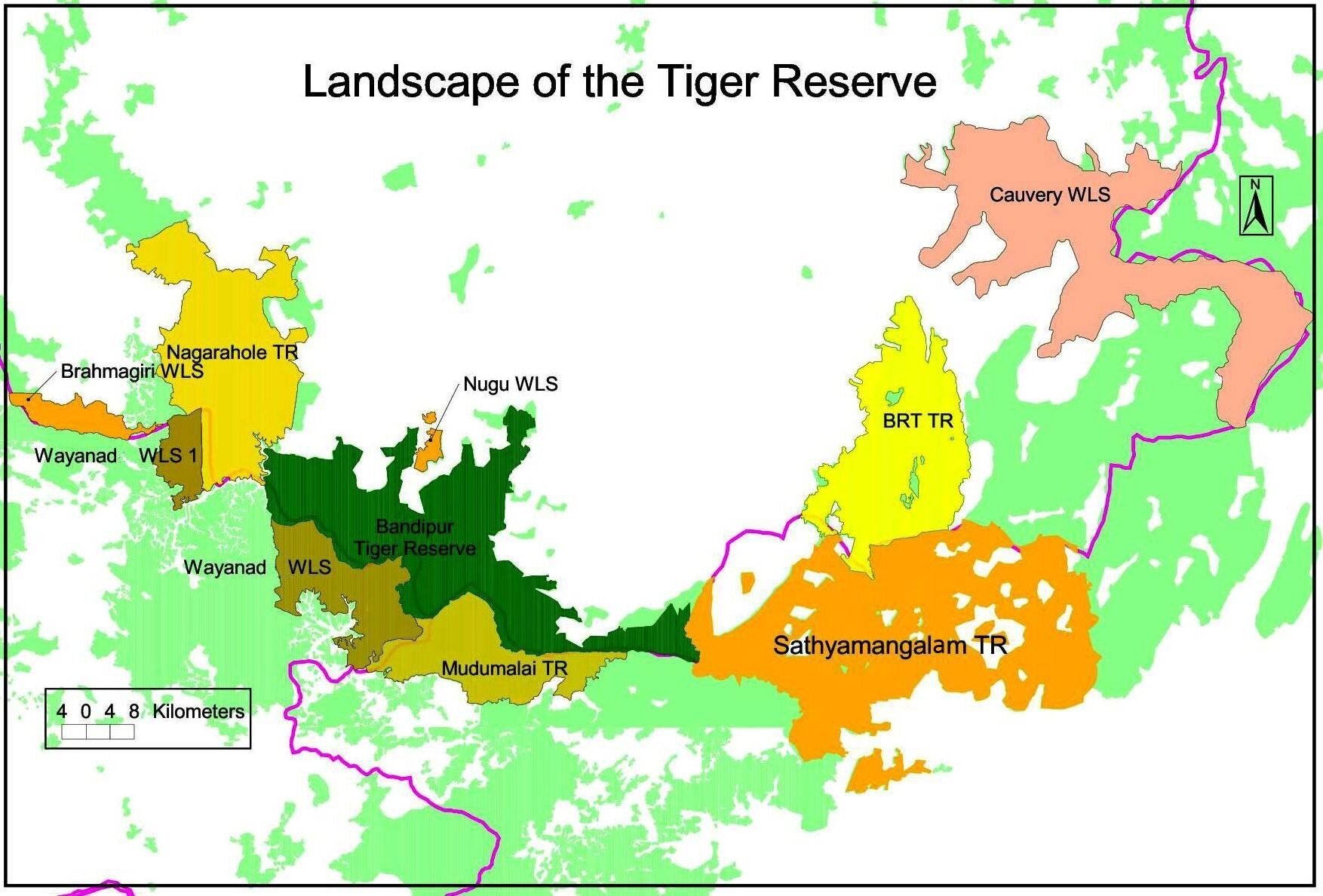Social Justice
National Food and Nutrition Security Analysis
According to the National Food and Nutrition Security Analysis report, malnutrition amongst children in India is projected to remain high, despite all the progress made in food security.
- National Food and Nutrition Security Analysis report, was developed in partnership between the World Food Programme (WFP) and the Ministry of Statistics and Programme Implementation, Government of India.
Findings of the Report
- The slow decline of child stunting: Over the last decade, child stunting has reduced at a rate of about 1% per year, the slowest decline among emerging economies. At this rate, 31.4% of children will still be stunted by the 2022 deadline.
- Almost one in three Indian children under five years will still be stunted by 2022 going by current trends.
- Access to nutritious food has not increased: Foodgrain yields have risen 33% over the last two decades, but are still only half of 2030 target yields
- The consumer’s access to rice, wheat and other cereals has not increased at the same rate, due to population growth, inequality, food wastage and losses, and exports.
- As a result, the average per capita consumption of energy among the poorest 30% of the population is 1811 kilocalories, much lower than the norm of 2155 kilocalories per day.
- Under and overnutrition: For several decades India was dealing with only one form of malnutrition- undernutrition. However, in the last decade, the double burden which includes both over- and undernutrition, is becoming more prominent and poses a new challenge for India.
- Despite positive trends and patterns in improving food security, the prevalence of malnutrition in India remains high, with many people, especially women and children, suffering from micronutrient deficiency.
- Performance of States: In Bihar and Uttar Pradesh the stunting rate is around 48% and 46% respectively. It shows that in these states almost every 2nd child is stunted.
- Whereas in Kerala and Goa, it is only one in five children.
- The most vulnerable: There are high rates of stunting among children in the poorest wealth quintile is (51.4%), Scheduled Tribes (43.6%) and Scheduled Castes (42.5%), and children born to mothers with no education (51%).
- Stunting: It is the impaired growth and development that children experience from poor nutrition, repeated infection, and inadequate psychosocial stimulation. Children are defined as stunted if their height-for-age is more than two standard deviations below the WHO Child Growth Standards median.
- According to UNICEF, 38% of children younger than five years of age in India are stunted, a manifestation of chronic undernutrition. Stunting and other forms of under-nutrition are thought to be responsible for nearly half of all child deaths globally.
Key Recommendations
Recommendations are grouped by the three pillars of food security: availability, access and utilisation.
- Farmers should be encouraged and incentivised for agricultural diversification.
- Innovative and low-cost farming technologies, increase in the irrigation coverage and enhancing knowledge of farmers in areas such as appropriate use of land and water should be encouraged to improve the sustainability of food productivity.
- The government should improve policy support for improving agricultural produce of traditional crops in the country.
- Storage capacity should be improved to prevent post-harvest losses.
- The targeting efficiency of all food safety nets should be improved, especially that of the Targeted Public Distribution System (TPDS), to ensure that the poorest are included.
- In addition, fortification of government-approved commodities within the social safety net programmes can improve nutritional outcomes.
- Child feeding practices should be improved in the country, especially at the critical ages when solid foods are introduced to the diet.
- Fortification, diversification and supplementation may be used as simultaneous strategies to address micro and macronutrient deficiencies.
- There is a need for more robust measures that can take cognizance of all aspects of SDG 2.
- All the major welfare programmes need to be gender sensitive.
Sustainable Development Goal (SDG)- 2
- Goal 2 of the 2030 Sustainable Development agenda seeks to end hunger and all forms of malnutrition and double agricultural productivity in the next 15 years.
- Ensuring this sustainable access to nutritious food universally will require sustainable food production and agricultural practices.
- Target 2.1: By 2030, end hunger and ensure access by all people, in particular, the poor and people in vulnerable situations, including infants, to safe, nutritious and sufficient food all year round.
- Target 2.2: By 2030, end-all forms of malnutrition, including achieving, by 2025, the internationally agreed targets on stunting and wasting in children under 5 years of age, and address the nutritional needs of adolescent girls, pregnant and lactating women and older persons.
World Food Programme (WFP)
- It is the food assistance branch of the United Nations and the world's largest humanitarian organization addressing hunger and promoting food security.
- Its headquarters are in Rome and it works to help people who cannot produce or obtain enough food for themselves and their families.
- The WFP was formally established in 1963 by the FAO and the United Nations General Assembly on a three-year experimental basis. In 1965, the programme was extended to a continuing basis.
- It is a member of the United Nations Development Group and part of its executive committee.
Social Justice
NITI Aayog's Health Index
NITI Aayog in its annual health index has named Kerala, as the top performer among larger states for overall performance on health indicators.
Health Index
- The second edition of NITI Aayog’s report focuses on measuring the overall performance and incremental improvement in the states and union territories (UTs) over two year period (2016-17 and 2017-18 with 2015-16 as the base year and 2017-18 as the reference year.
- The health index has been developed by NITI Aayog, with technical assistance from the World Bank, in consultation with the Ministry of Health and Family Welfare.
- Health index is based on 23 health indicators with major weightage given to mortality rate, total fertility rate, and sex ratio.
- The ranking was done under three categories larger states, smaller states and Union territories (UTs) to ensure comparison among similar entities.
Key Findings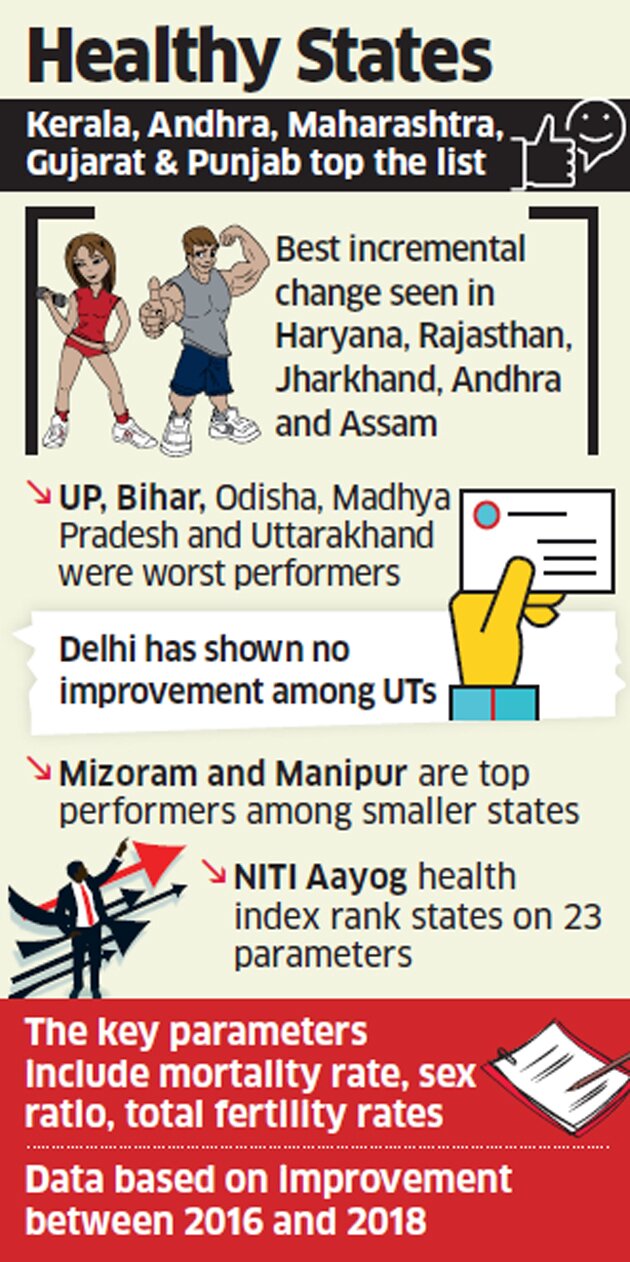
- In overall performance, Kerala followed by Andhra Pradesh and Maharashtra, are top performers.
- Madhya Pradesh, Odisha, Uttarakhand, Uttar Pradesh and Bihar have shown no improvement in health status.
- In incremental performance, Haryana, Rajasthan, and Jharkhand are at the top while Uttar Pradesh, Bihar, Odisha, Madhya Pradesh, and Uttarakhand have been shown as the worst performers.
- The report highlighted a decline in the overall health index score of the five empowered action group (EAG) states of Bihar, Uttar Pradesh, Uttarakhand, Madhya Pradesh, and Odisha.
- Among the Union Territories (UTs), Chandigarh ranked first in overall performance, while Dadra and Nagar Haveli have shown significant improvement.
- Among the smaller states, Mizoram ranked first in overall performance, while Tripura and Manipur were the top two states in terms of incremental performance.
- Overall health index scores have decreased the most for Sikkim and Arunachal Pradesh.
Indian Economy
State Divide in Unemployment
The Periodic Labour Force Survey (PLFS) for 2017-18 reflects huge variations among the states in terms of the unemployment rate. The survey reflects the overall unemployment rate in India at 6.1%.
- Nagaland and Meghalaya occupy the top and bottom positions among all states in terms of the unemployment rate at 21.4% and 1.5% respectively.
- In terms of Rural-Urban divide, urban areas are facing a high rate of unemployment (7.8%) in comparison to rural areas (5.3%).
- The unemployment rate among rural males (5.8%) is higher than that of females (3.8%), while for urban areas the phenomena reverses with the unemployment rate among females (10.8%) higher than that of males (7.1%).
- The unemployment rate among females has been observed lower than the males with 5.7% and 6.2% respectively.
- Goa and Kerala are high in female unemployment with a rate of 26% and 23.3% respectively. Meghalaya is at the bottom with 1.9%.
Periodic Labour Force Survey (PLFS)
- The Periodic Labour Force Survey (PLFS) was launched by the National Sample Survey Organisation (NSSO) in 2017.
- The objective of PLFS is primarily on two aspects:
- The first is to measure the dynamics in labour force participation and employment status in the short time interval of three months for the urban areas only in the Current Weekly Status (CWS).
- Thus, in every quarter, PLFS will bring out the level and change estimates of the key labour force indicators in CWS viz. Worker- Population Ratio (WPR), Labour Force Participation Rate (LFPR), Unemployment Rate (UR).
- Secondly, for both rural and urban areas, level estimates of all important parameters in both usual status and CWS will be brought out annually.
Key Employment and Unemployment Indicators
- Labour Force Participation Rate (LFPR): LFPR is defined as the percentage of persons in the labour force (i.e. working or seeking or available for work) in the population.
- Worker Population Ratio (WPR): WPR is defined as the percentage of employed persons in the population.
- Proportion Unemployed (PU): It is defined as the percentage of persons unemployed in the population.
- Unemployment Rate (UR): The unemployment rate is calculated by dividing the number of unemployed by the number in the labour forces, that is, the sum of employed and unemployed.
- Activity Status- Usual Status: The activity status of a person is determined on the basis of the activities pursued by the person during the specified reference period. When the activity status is determined on the basis of the reference period of the last 365 days preceding the date of survey, it is known as the usual activity status of the person.
- Usual Principal Status and Subsidiary Status (PS+SS): The Usual Principal Status and Subsidiary Status approach is an extension to the principal status approach.
- If a person has engaged in any economic activity for a period of 30 days or more during the preceding 365 days a person is considered as employed under this approach.
- Activity Status- Current Weekly Status (CWS): The activity status determined on the basis of a reference period of last 7 days preceding the date of the survey is known as the current weekly status (CWS) of the person.
Indian Polity
Elections of Rajya Sabha
The Election Commission has announced election dates for six Rajya Sabha seats of Tamil Nadu.
- The Rajya Sabha or the Upper House of Parliament is modelled after the House of Lords in the United Kingdom.
- Composition of the house: Article 80 of the Constitution have provisions for members of the Rajya Sabha. Currently, it has 245 members, including 233 elected members and 12 nominated. As per the constitutional limit, the Upper House strength cannot exceed 250.
- The number of Rajya Sabha members a state can send depends on its population. Hence, the number of elected seat changes as states are merged, bifurcated or new ones are created.
- Nominated members of the Rajya Sabha are nominated by the President of India in the field of art, literature, science and social service.
- The Vice-President is the ex-officio chairperson of the Rajya Sabha.
- The Deputy Chairman, who is elected from amongst the house's members, takes care of the day-to-day matters of the house in the absence of the Chairman.
- Tenure of members: Every Rajya Sabha MP has a tenure of six years and elections to one-third seats are held every two years.
- According to Section 154 of the Representation of the People Act 1951, a member has chosen to fill a casual vacancy will serve for the remainder of his predecessor's term of office.
- Permanent house: The Rajya Sabha meets in continuous sessions, and unlike the Lok Sabha, is not subjected to dissolution. However, the Rajya Sabha, like the Lok Sabha can be prorogued by the President
- Process of election: Rajya Sabha members are elected indirectly by the people, that is, by the MLAs.
- Members of a state's Legislative Assembly vote in the Rajya Sabha elections in proportional representation with the single transferable vote (STV) system. Each MLA’s vote is counted only once.
- To win a Rajya Sabha seat, a candidate should get a required number of votes. That number is found out using the below formula. Required vote = Total number of votes / (Number of Rajya Sabha seats + 1 ) + 1.
Social Justice
Celiac Disease
It has been revealed that one of every 140 persons in India is estimated to have celiac disease.
- Also called Wheat Allergy, celiac disease is a chronic inflammation of the small intestine caused by an intolerance to gluten and usually present in genetically predisposed individuals.
- Gluten is a general name for the proteins found in wheat, rye, barley and triticale – a cross between wheat and rye.
- Gluten helps food maintain its shape, acting as the glue that holds food together.
- Effect of the disease on the body: When people with celiac disease eat gluten, their body mounts an immune response that attacks the small intestine, indicating the disease being an autoimmune disease.
- These attacks lead to damage on the villi, small fingerlike projections that line the small intestine, that promote nutrient absorption.
- When the villi get damaged, nutrients cannot be absorbed properly into the body.
- Also, the modern wheat which is hexaploid rather than diploid, is more antigenic, meaning it stimulates the production of antibodies when introduced into the body.
- People with celiac disease have a two times greater risk of developing coronary artery disease, and a four times greater risk of developing small bowel cancers.
- Currently, the only treatment for celiac disease is lifelong adherence to a strict gluten-free diet. People living gluten-free must avoid foods with wheat, rye and barley, such as bread and beer.
- Many people who do not have celiac disease can also be sensitive to gluten, known as non celiac gluten sensitivity.
Issues with Gluten Free Diet
- People not diagnosed with celiac disease are giving up cereal grains for perceived benefits such as weight loss and better digestion.
- Cereal grains such as wheat are a source of dietary fibre and is needed for the bowels to work properly.
- Food containing gluten also are an important source of protein that most Indians lack.
- Going gluten-free might also increase the risk of heart disease.
Autoimmune Disease
- A body has an immune system, which is a complex network of special cells and organs that defends the body from germs and other foreign invaders.
- In a body suffering from Autoimmune disease, the immune system attacks the body's own tissues and organs.
- The body parts that are affected depend on the type of autoimmune disease. There are more than 80 known types. Some of them are Multiple Sclerosis, Leucoderma etc.
Biodiversity & Environment
Joint Effort to Conserve Wildlife at Bandipur
National Tiger Conservation Authority (NTCA) has convened an inter-state meeting of senior forest personnel from Karnataka, Tamil Nadu and Kerala at Bandipur in Karnataka.
- It has decided to make a concerted effort to conserve wildlife in the region. The joint effort would primarily focus:
- To eradicate invasive plants such as Senna Spectabilis which caused a major threat to the wildlife habitat in the Nilgiri Biosphere Reserve.
- To ensure inter-state coordination in conserving the endangered vulture population in the region.
- To mitigate increasing human-wildlife conflict on the forest fringes of the region. As part of it, information regarding radio-collared animals and their movements would be exchanged among the department staff.
- To stop forest fire and information on such incidents would be handed over to the officials in the adjacent sanctuaries and tiger reserves.
- Information on accused in forest cases would also be exchanged each other to avert wildlife-related crimes.
Bandipur Tiger Reserve
- Bandipur Tiger Reserve came into being in 2007. The name is derived from a village called Bandipur where the administrative unit of the Tiger Reserve is located.
- It the largest protected area in southern India and the largest habitat of wild elephants in South Asia, together with the adjoining Nagarhole National Park, Mudumalai National Park and Wayanad Wildlife Sanctuary. It is part of the Nilgiri Biosphere Reserve.
- The Moyar River originating from the Nilgiri Mountain Range near Pykara, meandering through the Reserve over a length of more than 20 Km. It is the major water source for the wildlife and people living in and around the Reserve.
- The Tiger Reserve is situated is a distinctive landmass located at the tri-junction area of the States of Karnataka, Tamil Nadu and Kerala.
Biodiversity & Environment
Normalized Difference Vegetation Index
A recent study has found that the normalized difference vegetation index does not yield a reliable estimate of food abundance for elephants in tropical forests.
- Normalized Difference Vegetation Index (NDVI) estimates the density of vegetation and amount of food abundance available for herbivorous animals, for example, elephants.
- This index has a negative correlation with graminoids (grassy food – grasses, sedges, and rushes – preferentially consumed by elephants) in tropical forests.
- Negative correlation implies grass density is low in areas with a high value of NDVI (which indicates healthier vegetation).
Normalized Difference Vegetation Index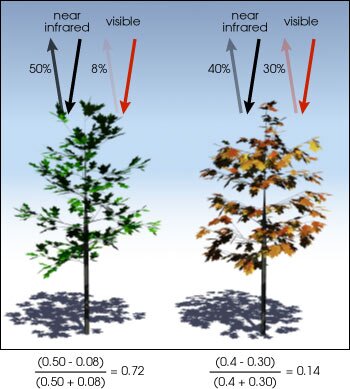
- NDVI calculates the difference between the red and near infrared components of light reflected by objects (like satellite).
- Since healthy vegetation strongly absorbs red and reflects near-infrared light, this difference can indicate the presence of healthy vegetation and can be mapped into a colour code (green and red).
- High NDVI value (bright green) indicates healthier vegetation whereas low value (red) indicates less or no vegetation.
- Data obtained from satellites (like Sentinel-2, Landsat and SPOT) that produce red and near-infrared images are used for estimating NDVI.
Significance
- Agriculture: farmers use NDVI for precision farming and to measure biomass.
- Forestry: foresters use NDVI to quantify forest supply and leaf area index.
- Environment: NDVI is used to inform the ecology of various species, from elephants and red deer to mosquitoes and birds.
- Drought: NASA states that NDVI is a good indicator of drought when water limits vegetation growth, it has a lower relative NDVI and density of vegetation.
Important Facts For Prelims
Manouria impressa: Arunachal Pradesh
A tortoise named ‘Manouria impressa’ has been discovered in Arunachal Pradesh. Manouria is a genus of tortoises.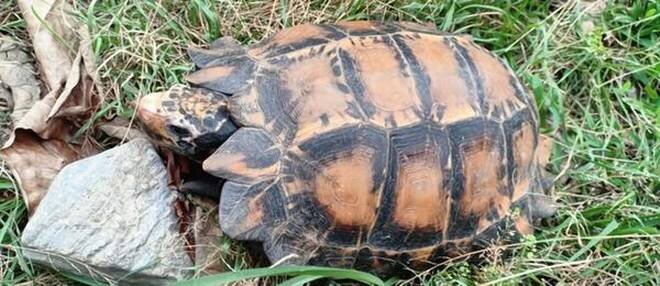
- Manouria impressa is one of the only fourth species of forest-dwelling tortoise occurring in Southeast Asia.
- This is the smaller of two species of the genus Manouria (Manouria oyamai and Manouria punjabiensis), the other being the larger Asian Giant Tortoise (Manouria emys).
- Previously, the tortoise was believed to be restricted to western Myanmar, along with pockets of habitat in Thailand, Laos, Vietnam, Cambodia, and southern China, and south through Peninsular Malaysia.
- The species was last found in Gwa in Myanmar.
- The species is threatened by poaching primarily for traditional medicine and pet trade.
- It is listed on CITES Appendix II, and has been classified as Vulnerable by the IUCN Red List.
Asian Forest Tortoise
- Asian forest tortoise (Manouria emys), also known as Asian brown tortoise, is a species of tortoise found in India (Assam), Bangladesh, Burma (or Myanmar), Thailand, Malaysia and Indonesia (Sumatra, Borneo).
- It is the largest tortoise in mainland Asia.
- This is a relatively rare turtle, listed on CITES Appendix II, and classified as Endangered by the IUCN Red List.
Important Facts For Prelims
Lunar Evacuation System
Under the preparations for NASA’s 2024 Moon mission, a device called Lunar Evacuation System Assembly (LESA) has been tested.
- LESA developed by the European Space Agency (ESA), is a pyramid-like structure used for rescuing an injured astronaut on the lunar surface.
- Astronauts could not carry their fallen crewmate over their shoulder while wearing a heavy extravehicular activity (EVA) suit.
- LESA enables an astronaut to lift their crewmate onto a mobile stretcher in less than 10 minutes, before carrying them to the safety of a nearby pressurized lander.
National Aeronautics and Space Administration
- It is an independent agency of the United States Federal Government responsible for the civilian space program, as well as aeronautics and aerospace research.
- Headquartered in Washington, D.C, United States.
NASA’s 2024 Moon mission or Artemis' program
- ARTEMIS stands for 'Acceleration, Reconnection, Turbulence, and Electrodynamics of the Moon's interaction with the Sun.
- Artemis program that will return astronauts to the Moon for the first time (including the first woman and the next man) in half a century, including eight scheduled launches and a mini-station in lunar orbit by 2024.
- As a result of Artemis, NASA will be able to establish a sustainable human presence on the Moon by 2028 to uncover new scientific discoveries, demonstrate new technological advancements, and lay the foundation for private companies to build a lunar economy.
Important Facts For Prelims
‘Jal Hi Jeevan Hai’ Scheme
Jal Hi Jeevan Hai Scheme has been launched by the Haryana government.
- The scheme has been launched with an aim to encourage farmers to adopt crop diversification and sow crops consuming less water like Maize, Arhar etc. instead of water guzzling crops such as paddy so as to conserve water.
- Due to continuous paddy growing in the State, about 1 meter of water table is depleting per year.
- Under the scheme, the amount Rs. 2000/acre will be transferred into the accounts of farmers in two phases i.e. Rs. 200/- at the time of registration and the balance Rs. 1800/- after verification of sowing data within two months. Free of cost hybrid seeds would also be provided under the scheme.
- The diversified crops produced, would be completely procured by the State Government.

